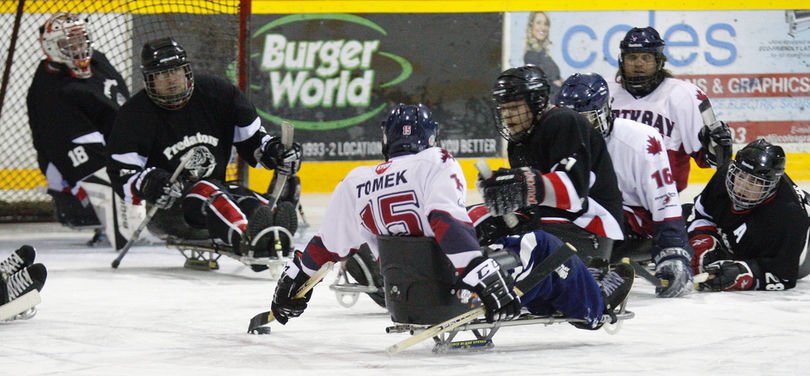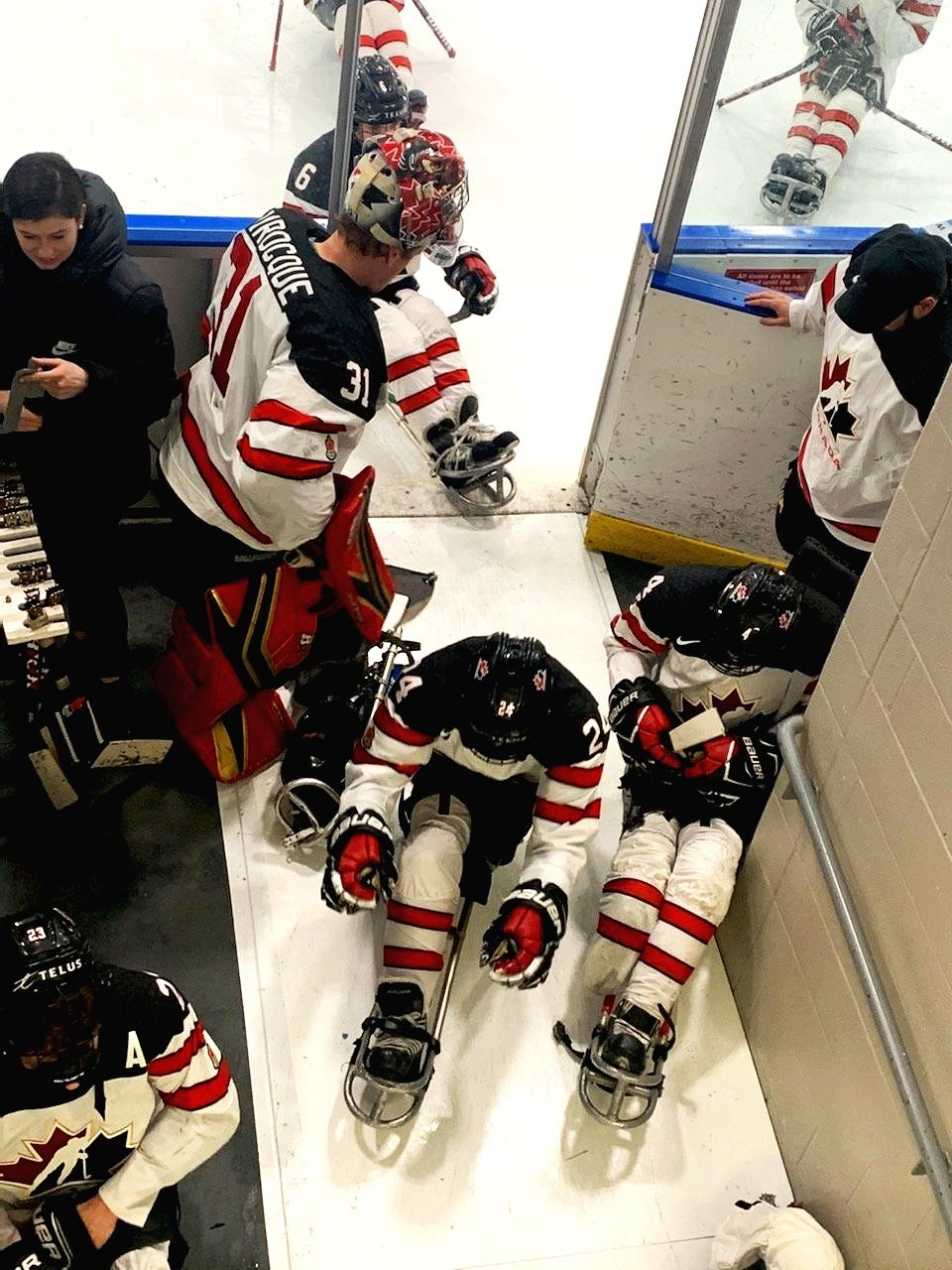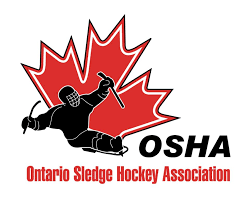SLEDGE HOCKEY













Sledge Hockey, also known as para hockey or para ice hockey, is a sport designed to allow athletes who have a physical disability to play the game of ice hockey. Invented in the early 1960s at a rehabilitation centre in Stockholm, Sweden, the sport grew to be played in multiple countries around the world, making a debut at the Winter Paralympics in 1994. Sledge hockey follows the same rules and structure as ice hockey, with six players on the ice, including the goalie. Players sit on a sledge consisting of a metal frame with a “bucket” (seat) mounted on top, and two regular skate blades attached under the bucket on which the player balances. Sledges may be customized for an individual athlete’s needs. Full hockey gear is worn, and players are strapped into the sledge. Players manoeuvre themselves using two specially constructed hockey sticks which have picks on one end to allow the player to propel the sledge, and a curved blade on the other for puck handling and shooting.
While Hockey Canada rules apply, there are some rule variations to accommodate the nature of the game and the players who participate. Teams are mixed gender, and within OSHA players of all ages and level of experience are welcomed. In larger communities there may be a dedicated junior development team, and the league has divisions for non-contact, full contact, and elite level play.
To see a video series on the sport, training, equipment, and Team Canada go to:
I PLAYED SLEDGE HOCKEY WITH TEAM CANADA
ONTARIO WINTER GAMES - GAME 5, TEAM EAST vs. TEAM WEST
2022 ontario parasport games - coverage by parasport tv
CANADA vs. USA SEMI-FINAL WINTER PARALYMPIC GAMES 2014
The Best Para Ice Hockey Goals at Pyeongchang 2018


